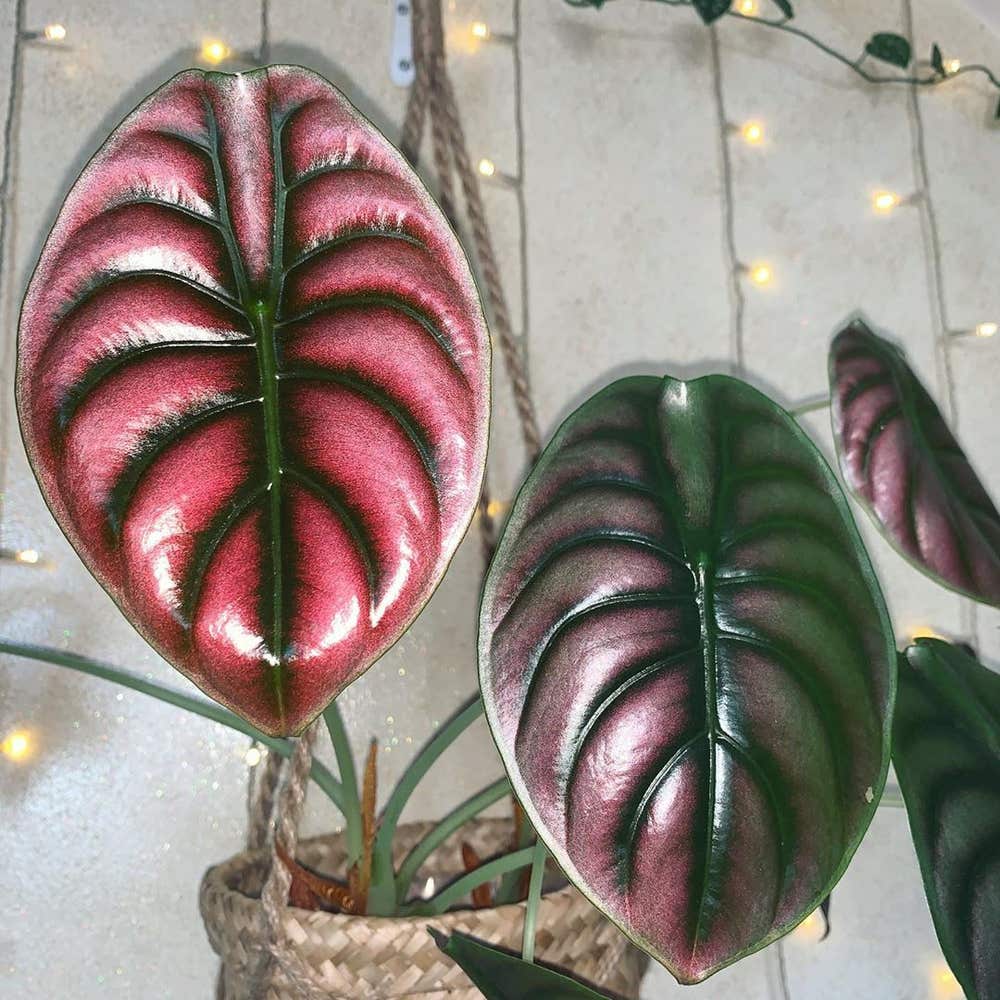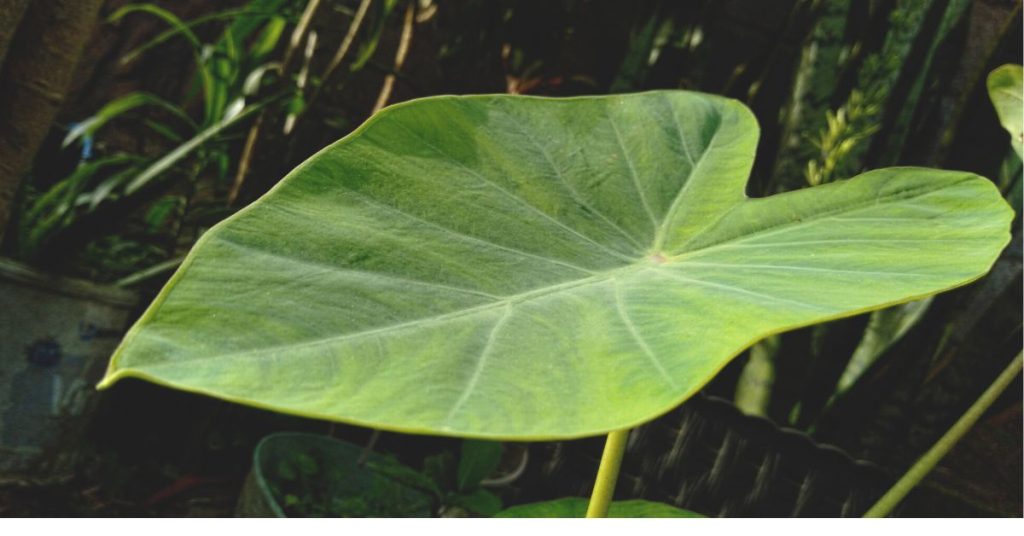Elephant ear plant care involves providing sufficient light, water, and well-draining soil for optimal growth. These tropical plants thrive in warm, humid conditions and require regular watering to keep the soil consistently moist.
Additionally, they benefit from occasional misting to mimic their natural habitat. Pruning any dead or yellow leaves, along with fertilizing every few weeks during the growing season, will help maintain the plant’s health. With proper care, elephant ear plants can add a touch of exotic beauty to any indoor or outdoor space.
Whether you are a seasoned plant enthusiast or a beginner, this guide will provide you with the essential care tips to keep your elephant ear plants healthy and thriving.
Choosing The Right Location
Choosing the right location is crucial for elephant ear plant care. Ensure it gets ample sunlight, prefers well-draining soil, and protect it from extreme temperatures.
Elephant ear plants are tropical beauties that require the perfect location to thrive and create a stunning display in your garden or home. To ensure the success of your elephant ear plant, it is crucial to consider factors such as lighting, temperature, and humidity. Let’s explore each aspect in detail to understand how to provide the best conditions for your elephant ear plant’s growth and well-being.
Understanding The Lighting Needs
Light is a fundamental aspect of plant care, and elephant ear plants are no exception. These plants thrive in bright, indirect light or partial shade. When choosing a location for your elephant ear plant, look for an area that receives bright, filtered sunlight for a significant part of the day. To cater to the lighting needs of your elephant ear plant, consider placing it near a north-facing window or in a spot with dappled sunlight. Avoid exposing the plant to direct sunlight, as this can lead to scorched leaves. If you notice your plant leaning towards the light source, rotate it every few days to ensure even growth.
Considering The Temperature And Humidity
Just like their home in tropical regions, elephant ear plants thrive in warm and humid environments. These plants prefer temperatures between 65°F and 85°F (18°C – 29°C) and high humidity levels. When selecting the perfect location, keep these temperature and humidity requirements in mind. Avoid placing the plant in areas with drafts or significant temperature fluctuations, such as near a door or air conditioning vents. Additionally, avoid high-traffic areas where temperature changes can be drastic. To maintain the necessary humidity levels, you can use a humidifier or place the plant on a tray filled with water and pebbles. This will create a microclimate around the plant and keep the leaves lush and healthy. Remember, finding the right location for your elephant ear plant is essential for its growth and well-being. By providing the ideal lighting conditions and ensuring suitable temperature and humidity levels, you can enjoy a thriving and vibrant elephant ear plant.

Credit: www.plantsforallseasons.co.uk
Providing The Ideal Growing Conditions
Proper care and attention are essential when it comes to the growth and well-being of Elephant Ear plants. By providing the ideal growing conditions, you can ensure that your plant thrives and brings a touch of tropical beauty to your home or garden. In this section, we will explore the key factors for success, including selecting the right soil, watering and fertilizing techniques, and pruning and propagation tips.
Selecting The Right Soil
Choosing the right soil is crucial for the healthy development of your Elephant Ear plant. These plants prefer well-draining soil that retains some moisture, allowing the roots to breathe. A rich and loamy soil mix is ideal, ensuring good water retention without becoming waterlogged. You can create the perfect mix by combining equal parts of garden soil, coconut coir, and perlite for optimum drainage and aeration.
Watering And Fertilizing Techniques
Watering plays a vital role in Elephant Ear plant care. These plants require moist soil, but overwatering can lead to root rot and other issues. It’s important to strike a balance. Ensure that the top inch of the soil feels slightly dry before watering, and then water thoroughly until the excess drains out. Remember, consistency is key, so maintain a regular watering schedule to keep the soil moist without causing waterlogged conditions.
In terms of fertilization, these plants benefit from a balanced, slow-release fertilizer formulated for foliage plants. Feed your Elephant Ear plant every two weeks during the growing season, following the instructions on the fertilizer package. Avoid over-fertilization, as it can burn the plant’s roots and lead to nutrient imbalances. Regular fertilization will promote healthy growth and vibrant foliage.
Pruning And Propagation
Pruning is essential to maintain the shape and appearance of your Elephant Ear plant. Remove any yellow or damaged leaves, as well as spent flowers or seed heads. Additionally, trimming the plant back in spring can help promote bushier growth. Use clean and sharp pruning shears to minimize the risk of disease transmission.
If you wish to propagate your Elephant Ear plant, it’s relatively simple. Look for healthy rhizomes and separate them from the main plant using a sharp and sterile knife. Ensure the rhizome has some roots attached. Plant the separated rhizome in a pot with well-draining soil, burying it just below the surface. Keep the soil lightly moist and provide warmth and bright, indirect light. Within a few weeks, you should start to see new growth.
By following these guidelines for providing the ideal growing conditions, your Elephant Ear plant will thrive and bring beauty to your indoor or outdoor space. Remember to regularly monitor and adjust the watering, fertilization, and pruning as needed to ensure the best results.
Preventing And Managing Common Issues
Discover essential tips and tricks for preventing and managing common issues in elephant ear plant care. From soil moisture regulation to pest control strategies, we’ve got you covered. Elevate your gardening game today.
Identifying and Treating Pest Infestations
Pests can wreak havoc on your beloved elephant ear plant, but with careful observation and proper treatment, you can keep these invaders at bay. Here are some of the most common pests that affect elephant ear plants: Aphids: These tiny insects may gather on the undersides of leaves, causing them to curl and turn yellow. To combat aphids, try spraying a mixture of water and dish soap on the affected areas, or use insecticidal soap. Spider Mites: Look out for tiny, reddish-brown or pale spiders that create fine webs. Spider mites thrive in dry conditions, so increasing humidity and regularly misting the leaves can discourage their growth. Alternatively, you can use natural miticides or insecticidal soap. Mealybugs: These pests resemble tiny cotton balls and can be found on the stems and leaf joints of your plant. Treat mealybugs by gently wiping them off with alcohol-soaked cotton swabs or by using an insecticidal oil or soap. Thrips: Thrips are small, slender insects that leave tiny white and silver streaks on your plant’s leaves. They can cause discoloration and deformities. To get rid of thrips, apply sticky traps or use insecticidal soap and neem oil following the label instructions. It’s essential to closely monitor the development of these pests and take prompt action to prevent them from multiplying and causing significant damage to your elephant ear plant.
Dealing with Diseases
Just like any other plant, elephant ear plants are susceptible to diseases that can impede their growth and overall health. Here are a few common diseases and their prevention strategies: Leaf Spot: Leaf spot disease manifests as black or brown spots on the plant’s leaves. Ensure proper air circulation around your plant, avoid overwatering, and regularly remove any infected leaves to prevent its spread. Rust: Rust appears as small, orange-colored pustules on the undersides of leaves. Promote good air circulation, avoid overhead watering, and immediately remove any infected leaves. Root Rot: Overwatering can lead to root rot, which causes the roots to become mushy and black. Ensure your elephant ear plant is planted in well-draining soil and only water when the top inch of soil feels dry. By maintaining a vigilant approach and promptly addressing any signs of disease, you can keep your elephant ear plant thriving and minimize the risk of severe damage.
Addressing Common Care Mistakes
Taking care of an elephant ear plant involves a bit of finesse. Here are some common care mistakes to avoid: Overwatering: Elephant ear plants prefer moist soil but can’t tolerate standing water. Overwatering can lead to root rot and other fungal diseases. Only water when the top inch of soil feels dry, and ensure proper drainage. Insufficient Light: Elephant ear plants thrive in bright, indirect light. If your plant is not receiving enough light, it can become leggy and weak. Place it near a window with filtered sunlight or provide artificial grow lights. Lack of Humidity: These tropical plants adore humidity, so misting their leaves or placing them near a humidifier can help mimic their natural environment. Improper Fertilization: Applying too much fertilizer or using the wrong type can damage elephant ear plants. Use a balanced, slow-release fertilizer during the growing season, following the package instructions. By avoiding these common mistakes and providing your elephant ear plant with the right conditions, you can ensure it thrives and becomes a stunning focal point in your indoor or outdoor garden.
:max_bytes(150000):strip_icc()/elephant-ear-plants-2132884-15-c8a2fff099f24f75b9d7c69dc0caa0e0.jpg)
Credit: www.thespruce.com

Credit: greg.app
Conclusion
Taking care of your Elephant Ear plant is essential for its overall health and growth. By providing the right amount of sunlight, water, and nutrients, you can ensure that your plant thrives. Regular pruning and repotting are also important to maintain its size and appearance.
By following these simple care guidelines, you can enjoy the beauty and elegance of your Elephant Ear plant for years to come. Happy gardening!
Frequently Asked Questions Of Elephant Ear Plant Care
How Often Should I Water My Elephant Ear Plant?
Water your Elephant Ear Plant once per week during the growing season. Be sure to check the top inch of soil for dryness before watering. Overwatering can lead to root rot, so it’s important not to keep the soil too wet.
How Much Sunlight Does An Elephant Ear Plant Need?
Elephant Ear Plants thrive in partial to full shade. Too much direct sunlight can scorch the leaves, so it’s best to provide filtered or indirect light. Keep in mind that different varieties may have slightly different sunlight requirements.
How Do I Propagate An Elephant Ear Plant?
To propagate your Elephant Ear Plant, divide rhizomes during the spring or summer months. Gently separate the rhizomes and plant them in well-draining soil. Provide regular watering and indirect light to encourage healthy growth.
Can An Elephant Ear Plant Be Grown Indoors?
Yes, an Elephant Ear Plant can be grown indoors. Choose a large pot with good drainage and place the plant in a location with bright, indirect light. Be sure to monitor humidity levels and water the plant regularly to keep the soil moist but not waterlogged.
